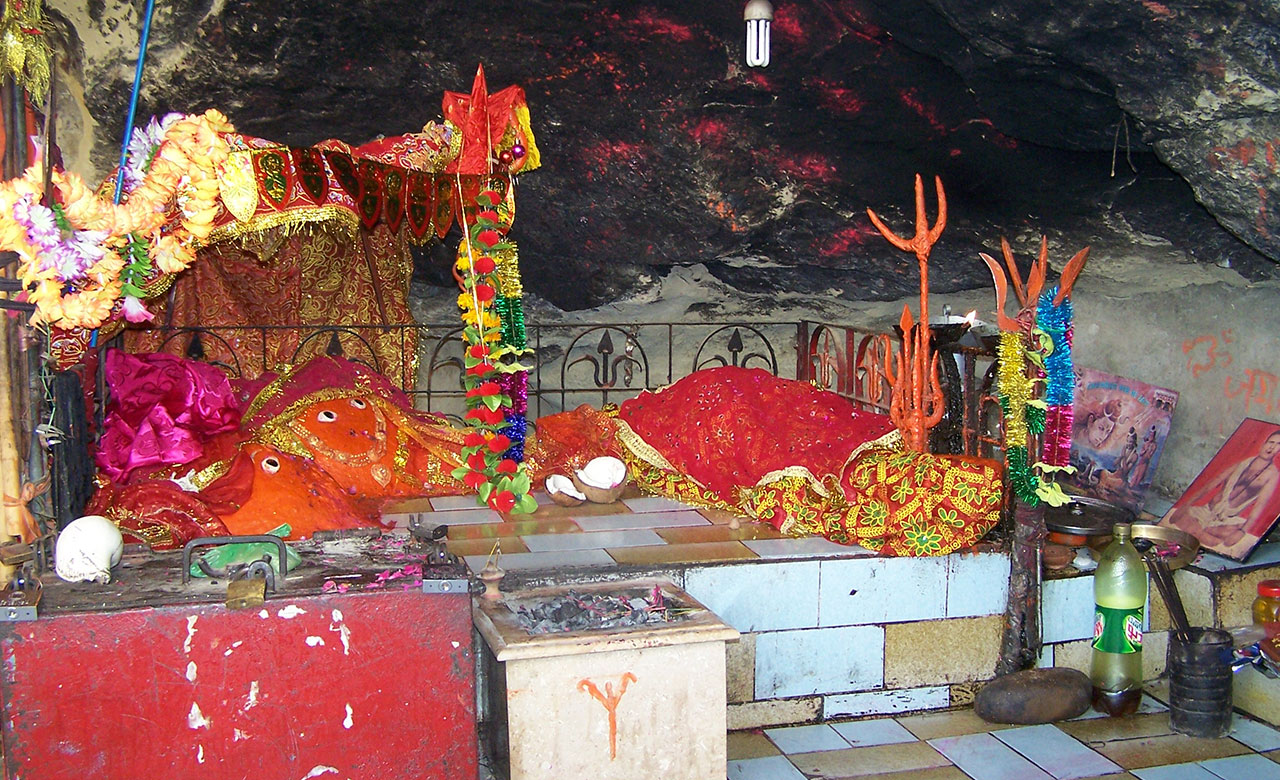
Informative
Hinglaj Mata, Balochistan
Most powerful tantric temples Series | Part 10- Hinglaj Mata, Balochistan
In an epic battle that lasted for 13 days, Lord Rama killed the Demon King Ravana using a powerful weapon created by Lord Brahma. After returning to His Kingdom, instead of sitting on His rightful throne, He went to the desert to attain penance for killing Ravana.
When asked, why are you going for penance for killing such an evil man? The Lord replied, “Indeed Ravana was overflowing with anger, lust, pride, greed, delusion, envy, and ego. It was a necessity to kill him for the greater good. But with him, I killed an honest Shiva devotee, a brilliant scholar, a great king, and a generous man”.
Saying this, Lord Rama went into the mountains to attain penance with His brother Laxman, wife Sita, and His beloved Hanuman. The place where he went for penance – is now in Pakistan, known as Hinglaj Mata. A holy place where the Divine Mother forgave Lord Rama.
We all know the story of the 51 Shakti Peethas, and how to save the world, with the help of his Sudarshan Disc, Lord Vishnu cut Sati’s body into 52 pieces. Hinglaj Mata temple is the exact spot where her head fell.
Located about 250 kilometers from Karachi, this mighty temple is situated in the middle of Hingol National Park in Balochistan Province. The Divine Mother’s cave temple is in the narrow gorge, in the hilly area, about 10 kilometers inland to the Arabian sea coastline.
A small shapeless stone, covered with vermillion, mounted on a mud altar is worshiped here as the Divine Mother Hinglaj Mata. The devotees believe that the whole area of the Hingol sanctuary is sacred and considered as the celestial presence. Like dunes, valleys, lakes, and rivers, natural formations are considered divine manifestations of the Divine Mother Hinglaj Mata.
Pilgrimage
The Hinglaj Mata pilgrimage used to be one of the most formidable expeditions in the world. Starting from Nanad Panthi Akhada, located in Karachi, devotees had to trek 250 kilometers in the desert. Hatha Yogis, who currently manage the holy site, is known to perform the same journey, even though now, the place is well connected by the roads.
Tantrics truly believe that the one who has his first six among the seven chakras activated can only complete this challenging pilgrimage of walking 250 kilometers in the desert without much of a food, water, or shelter. Many sages meditate there, as they believe that the place aids in activating and balancing the seventh chakra – Sahasrara or the crown chakra.
Apart from the Hindus in Pakistan, Zikri Muslims also hold respect to the Divine Mother Hinglaj Mata and are in charge of the holy site’s security. Calling the temple ‘Nani Mandir’ (the shrine of grandmother), these local Muslim tribes also attain her pilgrimage, calling the journey ‘Nani Ki Haj’ (grandmother’s Haj). Several times in the history of Balochistan, when fanatics tried attacking and destroying the Hinglaj Mata shrine, Zikri Muslims have stood together with their Hindu devotees, to protect it, setting up an excellent example of brotherhood and secularism.
Baba Chandragup – The Volcanic Shiva
Near the temple, there is a live mud volcano and Shakti worshippers believe that it is an embodiment of Lord Shiva. Thus, calling it Baba Chandragup. Surrounding the mouth of the volcano, devotees perform meditation for a whole night, surrendering to the divine power of the Lord Bholenath.
Before they start the meditation, they must approach the volcano, shout out their names, from where they are coming from, and the sins they have committed. After meditating around the volcano’s opening overnight, it is believed that they get rid of the sins they have committed. The next day, they have to present a coconut to the volcano.
Change in the wind’s direction, and the mud bubbling inside the volcano interprets whether you have been freed from your sins or not. Suppose the wind flowing over the boiling crater changes the direction, or the bubbling continues as the seeker throws the coconut into the volcano. In that case, it’s considered very pious, positive, and salvation from the sins.
Volcano and the Mind
What comes to our mind when someone says a volcano? Red hot melted lava, descending from the tall mountain’s slopes, destroying everything coming on its way, killing everything alive. Scientists believe that the volcano that erupted from the Deccan plateau was responsible for the extinction of the dinosaurs worldwide.
People often relate the anger to the volcano, with three different types of eruptions. Those are short, massive, and cataclysmic outbursts. Short anger outburst causes a personal loss, such as loss of wealth, or social stature. The massive eruption of anger can lead you to lose your life, or worst, loss of the relationship with someone you loved.
Cataclysmic anger eruption can only be compared with the accumulated anger within a large group of people, exploding all of a sudden in the form of war between two countries. Pilgrims, meditating on the mud volcano of the Hinglaj temple, surrender their anger to the mountain Chandragup. They believe that the only thing which can extinguish the anger volcano is the freezing waters of meditation.
-Mud, boiling within the volcano, represents the element earth, reminding us to be rooted in our foundational beliefs. Earth teaches us to hold still, facing the storms of life.
-Bubbles, coming out of the volcano, represent air, symbolizing the Prana, the life force, coming out of the destruction.
-Water, the element of emotions, represents fluidity and the ability to go with the flow.
-And lastly, the fire, associated with strength, activity, consuming impurities, and the darkness repeller. A symbol of ever igniting knowledge.
We must keep in mind that even though eruptions occur, destroying everything when the lava cools down invites renewal, resurrection, and growth. Shiva is considered as the destroyer of the worlds, making space for regeneration. He is the in-charge of the never-ending cycle of generation, organization, and destruction of the world. Devotees of the Divine Mother Hinglaj Mata believe that the mud volcano symbolizes the power of these celestial elements.
Devotees believe that whoever comes to the temple gets purified, both mentally and physically.
They trust that the divine Mother Hinglaj Mata is the bestower of vision to the blind, power to the weak, riches to the poor, and bless childless couples with children.
Hinglaj Mata temple has a paramount place in the hearts of Tantra worshippers. The crown chakra holds a significant position in chakra balancing and is often considered the last stage of chakra balancing. This place, located in the barren desert of Balochistan, is the location where the head of the Divine Mother fell.
Currently, the Divine Mother, residing in the cave, doesn’t have a glorious, marvelous temple built for her. Nevertheless, being one of the most powerful Shakti Peeth among the 52, the Hinglaj Mata shrine has enormous importance in history, spirituality, and in Hindu traditions. There are very few places on earth where lack of grandiose architecture invites you to get closer to the raw nature, to find the divine in nature itself. Hinglaj Mata temple is one such place.
Have you ever been to a place where you felt the divine presence in nature? If yes, please share your experience with us on info@ChamundaSwamiJi.com.
Post a Comment
-
Subscribe to Our Blog
-
Categories
-
Popular Articles
- Dead moth in the house. What universe is trying to tell you?
- Spiritual Meaning of Moth
- Vivah Bandhan Curse – What Is It and How to Spiritually Heal It.
- What are Beej Mantras?
- The Dasa Mahavidyas
- Tripura Sundari | The Dasa Mahavidya
- Maa Bhuvaneshwari | The Dasa Mahavidyas
- Ramakrishna Paramhansa – The Man who almost became a Woman
- The Five Shades of Tantra
- Maa Chinnamasta | The Dasa Mahavidyas



